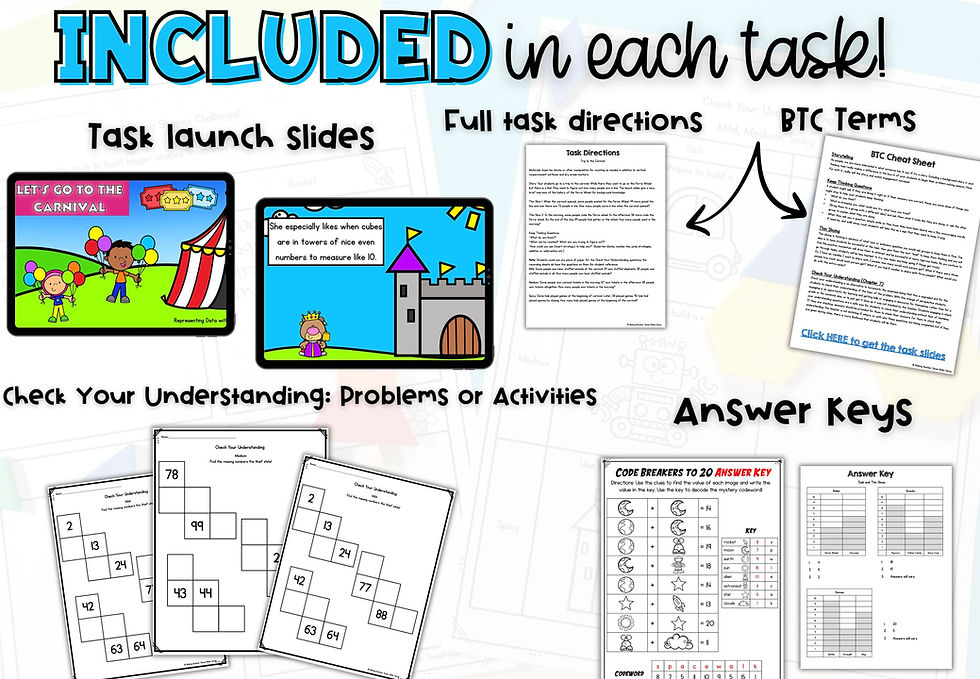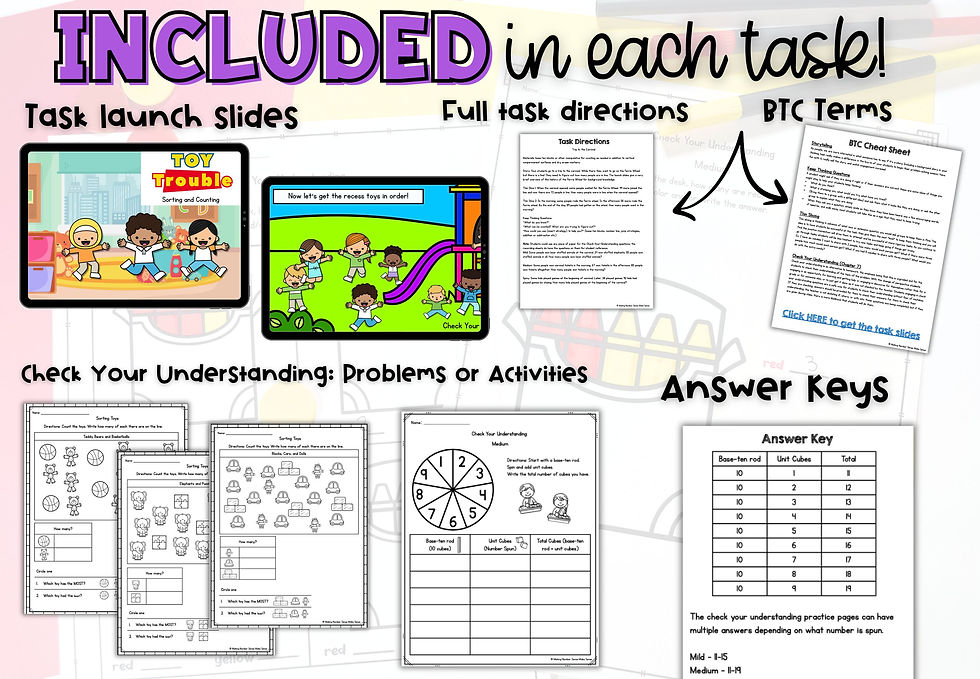6 Tips to Help Struggling Mathematicians
- Lara

- Apr 8, 2024
- 4 min read
Let’s talk about tips to help struggling mathematicians.
These tips will help most students, but especially students who may struggle with math.
Use Manipulatives
The first one is to use manipulatives. Manipulatives are the concrete, the first representation that your students need. And as kids get older, a lot of times those concrete manipulatives fade off. But a go-to if a student is struggling, make it concrete, make it things that they can touch and feel and move and use to support their thinking.
Involve Emotions
The next is to involve emotions. If what you're talking about is so far removed, kids can't see any connection and they're already struggling, it's kind of an opportunity for them to check out and not consider what you're saying at all. Especially if you have students who struggle with attention, or students who are learning a new language, there can be a lot going on.
That you're just saying to them that can go over their head. So if you involve emotions and stories and bring the concepts to life, it can help students remember and use what you're talking about.
Use Different Points of Entry
Auditory, Movement, etc.
All the systems that students know to take in information, to process information. Your working memory is not necessarily something that all students can access for whatever reason so, you're going to want to speak, yes, auditory, but also auditory in terms of music.
Sing songs, poems, things that rhyme, things that they can hear, that they can remember. Include movement, so it might be small movements, fine motor movements, or big movements to bring that together and again, build that muscle, build those connections. So with our auditory, we're going to sing it, say it, and repeat it.
And I don't just mean repeating the same thing over and over. There are things that kids need to hear repeatedly often to kind of get the flow.
I've shared before that since I was an immersion teacher I had two classes, so I would have one class where I would do math and science in the morning and then I'd switch with my partner teacher and then we'd have another class that would do the same thing as the first class Math and science, again.
So I was doing the same lesson twice, every day, and counting to a hundred every day twice was rough. I was just over it. I didn't want to do it anymore, but the kids needed to hear the number sequence over and over to get it.
Just like the alphabet song, just like any other song, kids might not be able to do it. Remember a number name, but they can sing for you entire songs because that's something that helps them, it's a way for them to remember. So, when you can, leverage singing and repeating in your classroom.

Use Fingers
Fingers are a great tool for math. There are already ten of them, which goes with our base ten system.
And it's ten manipulatives that they won't ever lose.
Studies have shown that students who are proficient with making finger patterns when they're younger, even when they're not using fingers, the same area of the brain that lights up when they're using fingers will still light up even when they don't need to use them anymore.
So fingers are something that, you can encourage your struggling mathematicians to use.
Get Them Moving
The next is to get moving. Whether that be standing instead of sitting, or if you're using a number line or addition and subtraction, you're having kids hop forward and hop back, they can see, visually see a student hopping forward and backward to see the spaces, and the person who's doing the hopping can feel the distance.
So you're not just using your fingers to count. Which you definitely should. So, on top of using their fingers to count, they might use their whole body for counting.
You can even use this when you are rote counting for every group of ten to have a new movement. So maybe you're clapping from 1 to 10, you're jumping from 11 to 20,
To bring in the auditory, the visual, the movement.
And so on.
Get Them Talking
And the last thing that you want to try and do, the last kind of tip to help struggling learners, is to get them talking.
Talking about what they're seeing, talking about their strategies. Word problems can be difficult for kids, but if they have somebody to talk through it with, that can help them with their processing.
If you have students who speak another language, especially if they're explaining, it can be helpful to allow them to explain to their partner in their home language so that they can focus on the math that you're doing instead of trying to figure out what word they need to say to explain themselves.
So sentence frames can help with talking if you want those students to speak in English, but sometimes you just need to let them go in the language that they're comfortable They prefer to help solidify their understanding. So to recap, the seven tips were to use manipulatives, involve emotions, use a lot of systems, sing it, say it, repeat it, use fingers, get students moving, and get students talking.
Now, hearing these tips, you might already be doing some, but consider thinking about one that you might want to add to your repertoire. And if you don't feel comfortable singing yourself, there are tons and tons of videos that you might want to use on YouTube, for any math concept that you can think of!




Comments